23 Ghost Towns in NEW YORK (Creepy, Scary, & Deserted)
Exploring a ghost town can be both thrilling and scary.
You can walk empty streets, peep into some fallen buildings, and try not to inhale some odd smell that could be while enjoying the breeze as you move, but at a slight sound, it all changes, fear takes over, and you start to look around but where to run? No way out!
New York is home to some of the most scary and exciting ghost towns scattered throughout the state.
These towns, once inhabited, bustling with lives and activities with growing population and economy, now stand empty and deserted due to natural disasters, pandemics, economic recessions, or industrial pollution.
Regardless of their history, these ghost town offers thrilling and adventurous experience and a glimpse of the past.
And by the way, you may also want to check out the best Small Towns in New York.
Ghost Towns in Upstate New York
1. Tahawus
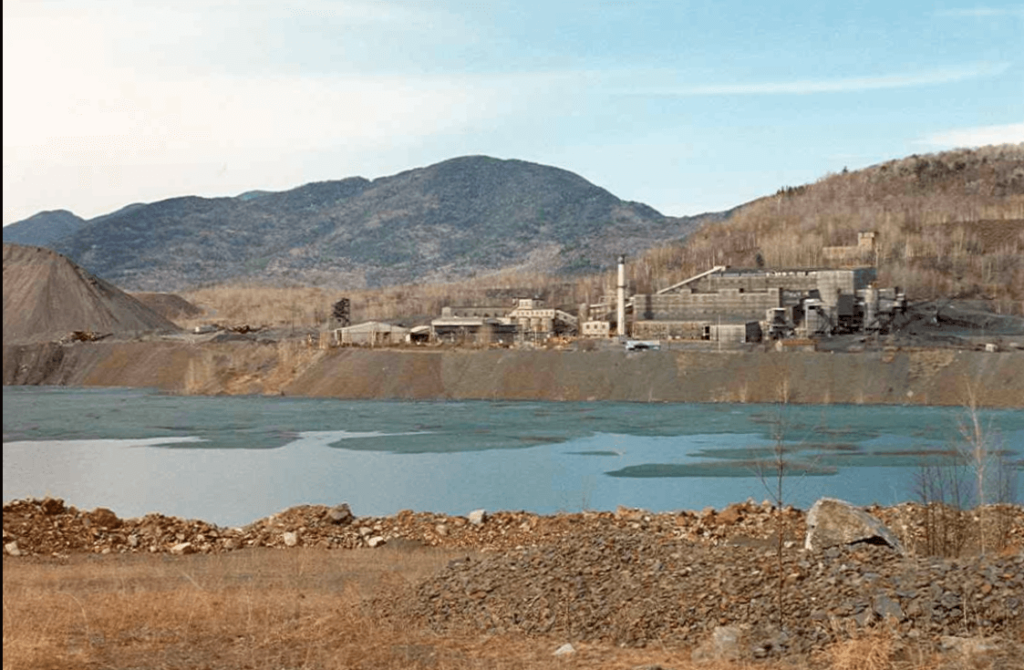
It’s hard enough to imagine becoming a ghost town once, but Tahawus, also known as Adirondack or McIntyre, had the unfortunate distinction of being abandoned twice.
In Adirondack Park, Tahawus was once a thriving village with hundreds of residents and numerous businesses.
Ironworkers began working in the area in 1826, but the mine was closed around 1857 due to impurities of titanium dioxide found in the iron.
However, a new mine opened in 1940, with workers looking for titanium dioxide.
Tahawus flourished again, but when the titanium mining was closed in 1989, the town was abandoned for the last time.
Today, the site of Tahawus is being conserved by the Open Space Institute, with about ten buildings remaining, constructed mainly by the Tahawus Club between 1890 and 1930.
Address: Town of Newcomb, Essex County, New York
2. Delta
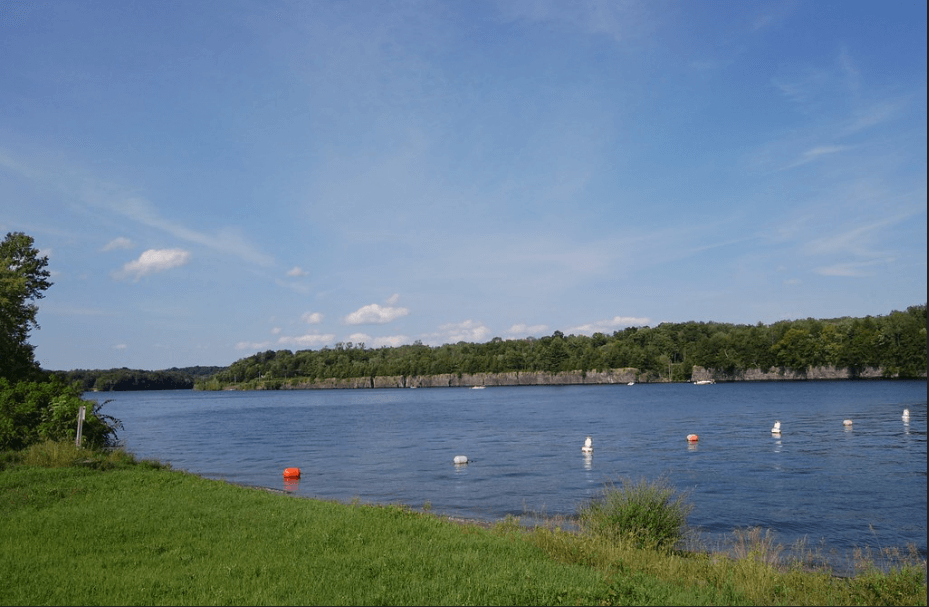
Like any other town, Delta was once a bustling town with a growing population, businesses, residential buildings, churches, stores, and many more.
This town was founded in the 18th century and developed till the 19th century when there was a need to dam the Mohawk River to form a reservoir in 1903.
The Delta site was selected as one of the reservoirs, and by the time the construction ended in 1912, the town had been submerged under the Mohawk River to form the existing Lake Delta.
Over 200 buildings, broken roads, cemeteries, and artifacts lie beneath the Lake, though some graves were dug to exhume the dead and transferred to other burial sites.
This lost town has attracted many tourists from many places all over the world.
Address: Rome in Oneida County, New York
3. Conklingville
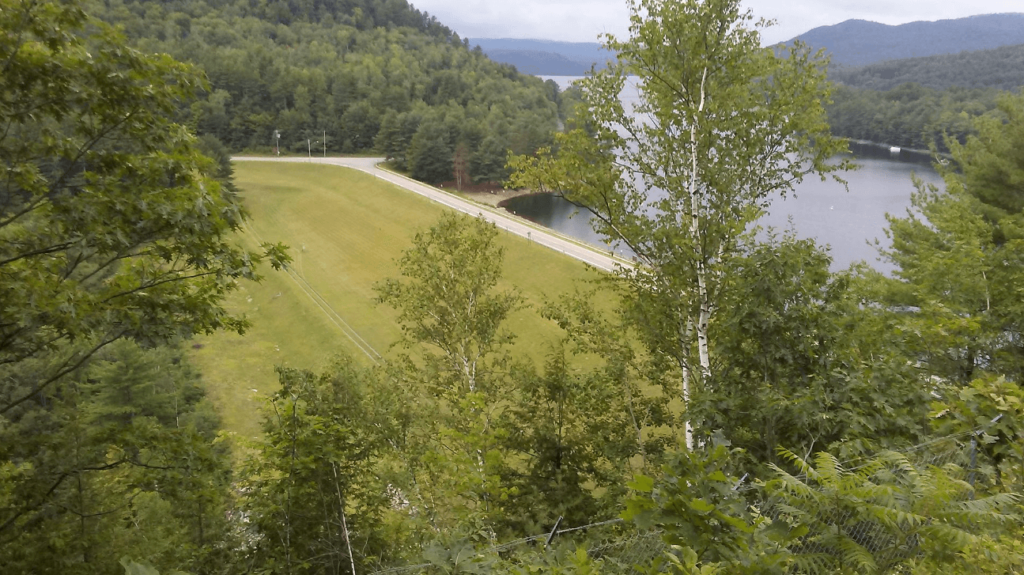
Have you ever thought of going on a trip with your loved ones, holding hands, and getting pulled into a lake by some powers?
Since the 1860s, the Sacandaga River has been subjected to periodic floods.
The flood affected people’s daily activities, so discussions on what to do began.
Should a dam be created to protect the people and their lives, many would have said yes, but in this case, this idea was met with many refusals as even the witches placed a curse to prevent the dam construction.
But the Hudson River- Black River regulating district stood firm as the dam’s owner, and in 1930 a dam was constructed.
Whether cursed or not, this ghost town has been a recreation destination for tourists, content creators, and paranormal enthusiasts.
Address: Hadley, Saratoga County, New York
4. Jayville
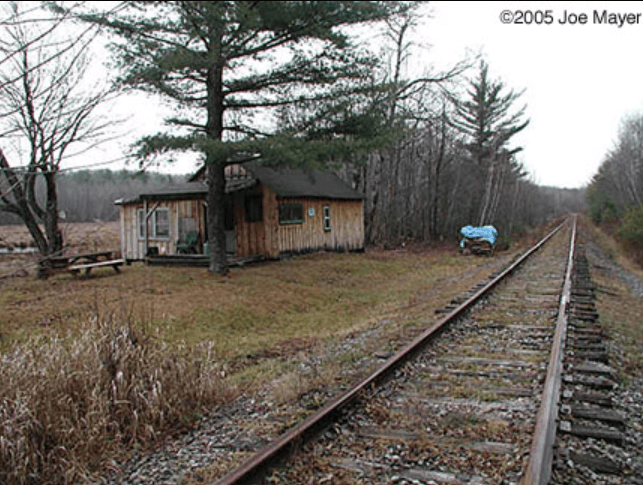
Some may wonder if it is out of luck or if this place was cursed because nothing worked.
Jayville started a mining community in 1850; its existence was short-lived as its non-favorable composition and difficult ore availability were abandoned in favor of neighboring Benson Miles.
After Mining stopped, the community decided to venture into another business – the sawmill.
The sawmills kept people busy and happy, but unfortunately, it was also short-lived.
Luckily for them, the railroad had been constructed in the early years, so the community survived that.
In 1914, there was another attempt to reopen the mines, which ended up being impossible,
An eventual fire ended the existence of this hamlet which stopped any other mining trials.
The remnant of this town can still be seen.
Address: Southwest Part of St. Lawrence County, New York
5. Love Canal
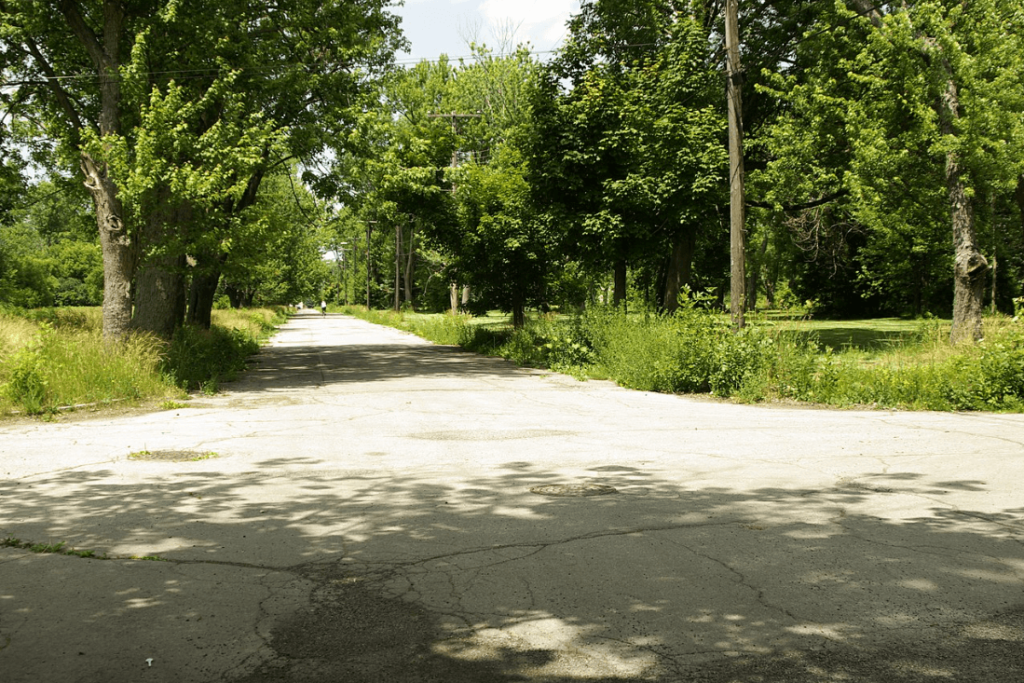
The Love Canal, situated in Niagara Falls, New York, previously served as a disposal site for hazardous chemicals.
That’s right, a whole community built on a toxic waste site!
In the 1940s and 50s, Hooker Chemicals and Plastics Corporation dumped over 22,000 tons of chemical waste into the abandoned canal.
Subsequently, the company sold the property to the regional education authority for a nominal fee of $1.
The school board built an elementary school and a whole community on the toxic waste site.
It wasn’t until 1978 that residents began complaining about health problems caused by the toxic waste.
Environmental Protection Agency (EPA) announced an emergency and relocated more than 800 households from the affected residences.
The Love Canal neighborhood was abandoned, a ghost town of toxic waste.
Address: Niagara Falls, Upstate New York
6. Parksville
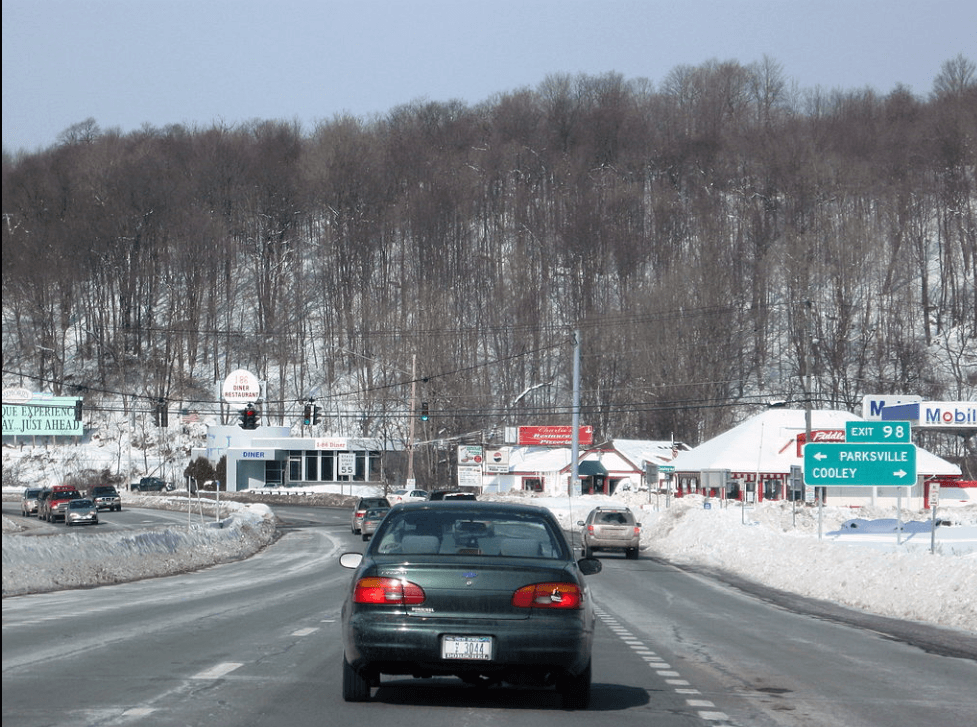
Once a hotspot for summer fun, Parksville resembles a semi-abandoned ghost town from a horror movie.
Various factors, including decreased passenger rail service and a growing wanderlust for other destinations, caused Parksville’s downfall. Tough break, Parksville.
Despite its state, Parksville still has a few open businesses, including Cabernet Frank’s restaurant.
The town’s history goes back to the 1800s when it was built around several mills and cultivated into a community by William Parks.
New York, Ontario & Western Railway line was later built, which saw increased visitors, particularly Jewish families seeking an escape from the summer heat in New York City.
Address: Town of Liberty, Sullivan County, New York
7. Timbuctoo
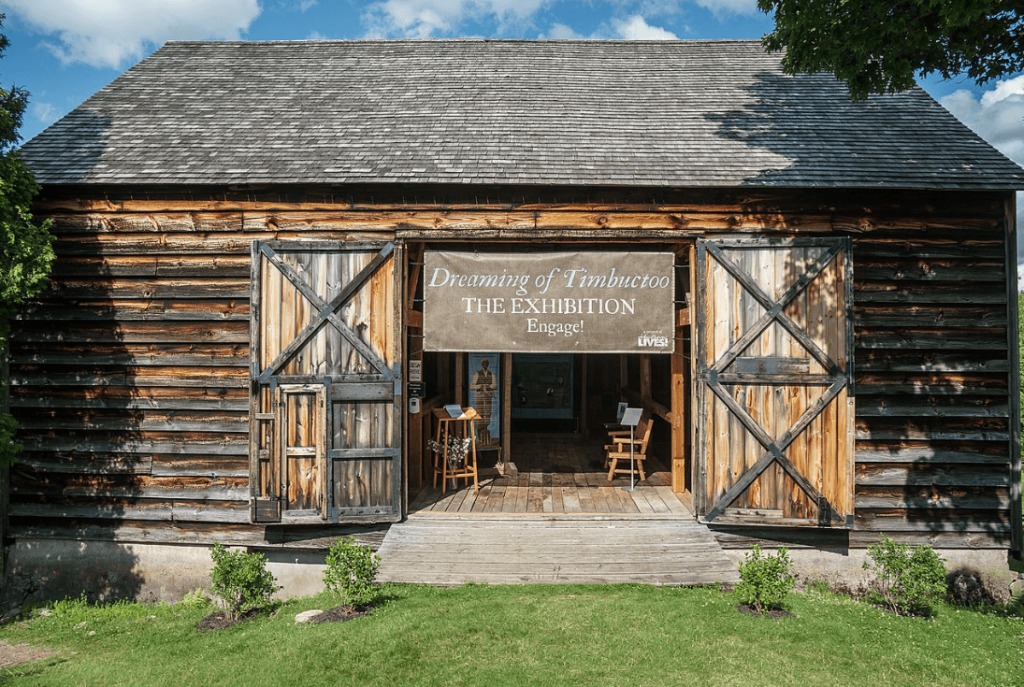
Timbuctoo, a farming community of African-American homesteaders, is a forgotten piece of Adirondack history.
It is a settlement near Lake Placid founded in the mid-1800s in the remote town of North Elba, NY.
Despite its short existence, Timbuctoo’s legacy deserves attention.
Sadly, there are no remnants of settlers’ cabins, historical markers, or signage to commemorate the community’s existence.
Some historians view Timbuctoo as a failure, but others recognize its significance as a testament to African-American perseverance and resilience.
The homesteaders of Timbuctoo faced many challenges, including discrimination, harsh weather, and poor soil.
Despite the odds, the community persevered and thrived for a brief while.
Although the physical remnants of Timbuctoo are long gone, its legacy lives on in the hearts of those who value preserving and celebrating the past.
Address: North Elba, New York, near Lake Placid, Adirondack Mountains
8. Happy Valley
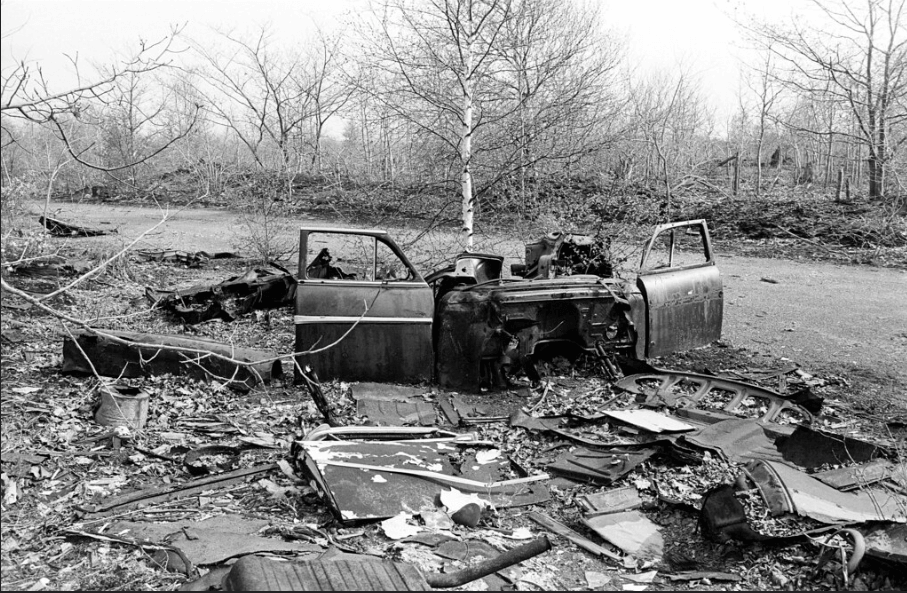
As a lover of history and abandoned places, you can’t help but be intrigued when you see the Ghost Town of Happy Valley in Oswego County, New York.
Hidden in the immense Happy Valley Wildlife Management Area, the remnants of this former lively community are now all that remains of a bygone era.
In the 18th century, the Happy Valley town thrived with a post office, general store, and sawmill.
But today, all that remains are a few abandoned buildings and a mystery surrounding why the town was abandoned.
Unlike its Canadian counterpart, which was abandoned due to air pollution from nearby nickel mines, the cause of Happy Valley’s decline remains a mystery.
A few theories propose that the town was distant from other settlements.
Address: Oswego County, Syracuse, New York
Also see our article on Haunted Houses in New York.
Ghost Towns in White Plains, New York
1. Dicktown
Nothing can be more scary than visiting a place and understanding that no one has two names; everywhere you turn, it’s just one name you hear.
And then, you look at yourself with a different name and question whether you are real.
But then it gets crazier if you realize everyone in this town goes by your name!
No town can get you out of your mind simultaneously, telling you that you are fine like Dicktown.
Apart from its location, Putnam County in New York state, nothing more is known or can be said about this ghost town than the fact that its early settlers were all called Richard, crazy, right?
Dicktown has attracted many curious minds looking to delve deep into how it becomes a ghost town.
Address: Putnam County, White Plains, New York
2. Doanesburgh
At every post office, you get into, you only want to be there, relate with people, and post your letters.
But what if the only ones capable of conveying your letters are ghosts?
Such is the story of Doanesburgh, established in 1839 by an early settler, Benjamin Doane.
This town is very similar to Dickstown as it does not have much in its database; all that there is to it is seeing it for yourself.
The post office was established in 1839 and closed in 1855; it remains as such to this day.
No one knows in detail what happened in this town, and neither can anyone explain how it became abandoned; you can only find out if you visit.
You will surely find it thrilling!
Address: Putnam County, White Plains, New York
Also see our article on Abandoned Places in New York.
Ghost Towns in Western New York
1. Elko
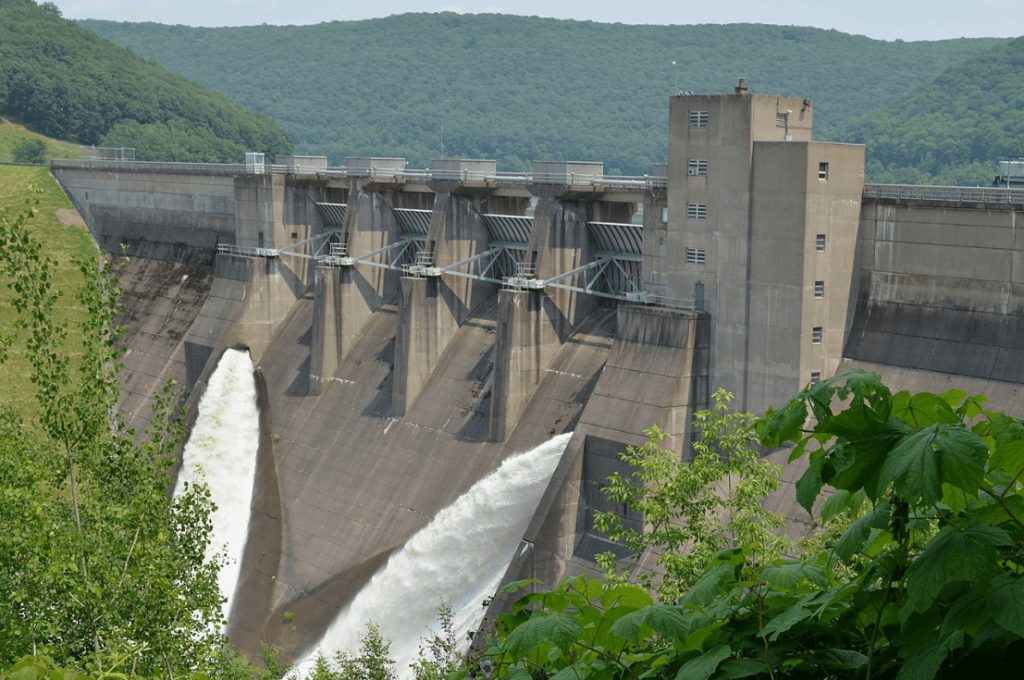
Just like Conklingville, residents of this town were also evacuated to build a dam.
This town in Cattaraugus County existed from 1890 to 1965, only one census of about 2000 people in the population was recorded, and it had just 75 registered voters recorded in its data.
Upon its forced evacuation in 1965, the construction of one of the largest dams in the United States began, the Kinzua Dam on the Allegheny River in Warren County.
This dam was authorized by the US and many said the evacuation was not for a lost cause as the dam has helped to control drought and aimed hydroelectric power production.
The Kinzua Dam now serves as a recreational destination for many tourists and historians looking to document happenings from the past.
Address: Cattaraugus County, Western New York
2. Cold Spring
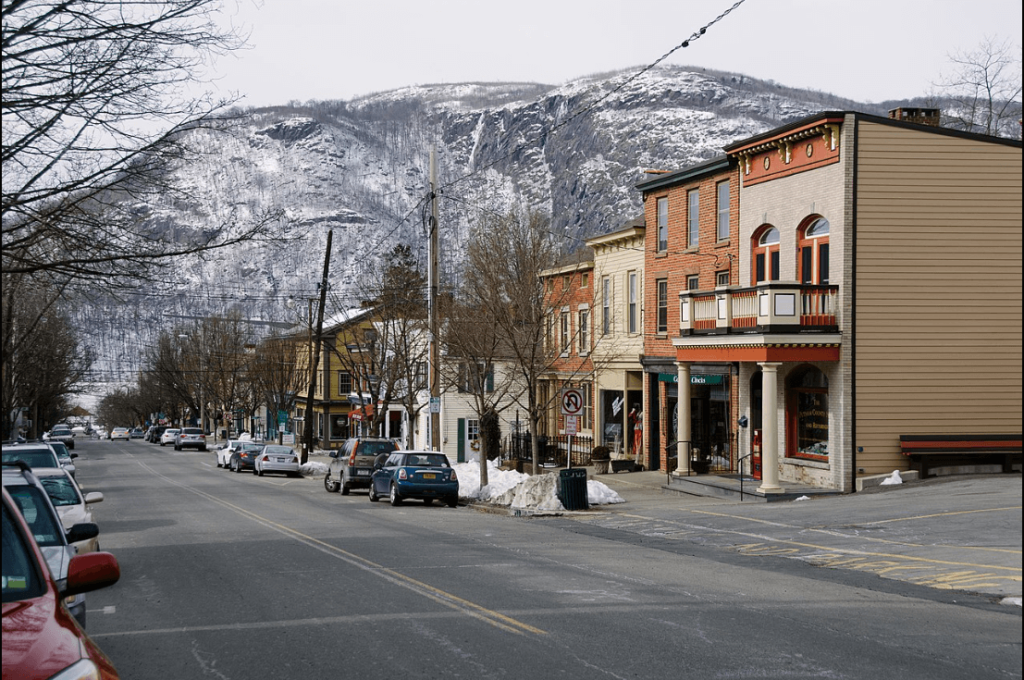
Once a bustling hamlet with a thriving lumber trade, Cold Spring now lies abandoned and forgotten in the Allegany Indian Reservation.
Despite being the location of the Seneca Longhouse, the town was deserted by its white residents after the lumber business declined and the railroad was built through Steamboat.
Today, there are no remnants of settlers’ cabins, no historical markers or signage to remind passers-by of this town’s former activity and importance.
But Cold Spring’s history is not one to be overlooked.
This town served as a crucial site for the Seneca people and has a unique eviction story due to the Kinzua Dam’s construction.
It may be a lost part of Adirondack history, Cold Spring is a haunting reminder of human activity’s fleeting nature and its impact.
Address: Salamanca, Cattaraugus County, New York
3. Little Ireland
Situated in Cattaraugus County, this small ghost town was once a bustling community in the 1800s and early 1900s, made up of Irish immigrants who officially called it Carrollton.
Unfortunately, it became abandoned after the railroad bypassed it. But what happened to the town?
Some say that what led to the town’s demise includes the lack of economic opportunities and the harsh winters. Others believe that the town was forgotten about and left to decay.
Regardless of the reason, Little Ireland is now nothing more than a historic site in Allegany State Park.
It’s a shame that Little Ireland is no longer a thriving community.
However, Little Ireland’s history and legacy live on, and visitors can still explore the remnants of this once-vibrant town in New York.
Address: Allegany State Park, Cattaraugus County, New York
4. Wilhelm
Are you ready to step back and explore a town frozen in history?
Look no further than Wilhelm, New York.
This ghost town, located in Erie County, New York, was once a small community with a post office/general store attached to the one remaining house.
Walking through the abandoned streets, you’ll feel the eerie silence that comes with a long-forgotten town.
The rusted remains of cars and scattered debris serve as a reminder of the people who once called this place home.
But what led to the demise of this once-thriving community?
Some say it was the closing of the local factory, while others speculate that a devastating fire was to blame.
Whatever the cause, Wilhelm now stands as a haunting reminder of a time gone by.
Address: Genesee Rd. and Gunville Rd., Erie County, New York
Also see our article on Abandoned Places in New York.
Ghost Towns in Hudson, New York
1. Doodletown
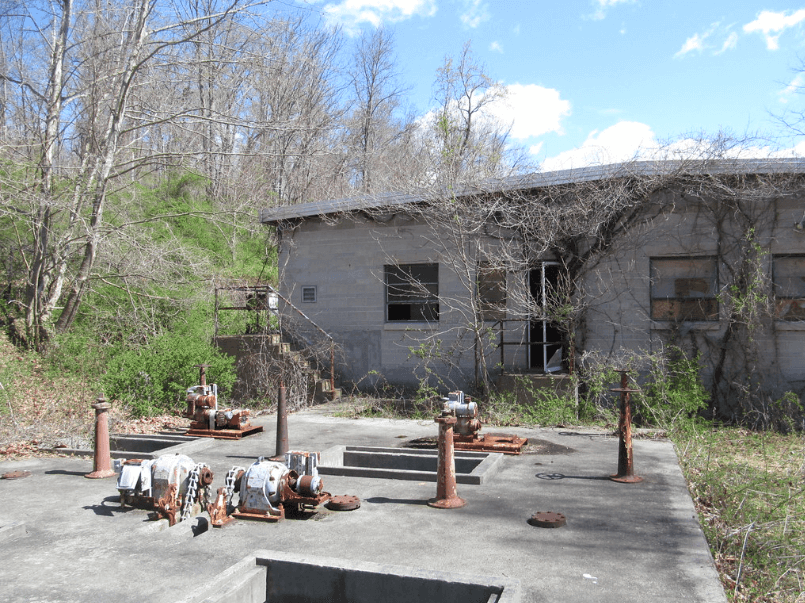
Founded in the 18th century, this town was a crossroad for soldiers during the Revolutionary War and battles at bear mountain Fort Montgomery.
The early settlers often worked as farmers, loggers, and miners.
By the 1920s, this town had a school, church, businesses, two cemeteries, and around 70 homes.
As Bear Mountain was being developed into a park, Doodletown was purchased as part of the park expansion.
Most of the population moved away, and those that refused to lose their land in land acquisition in 1965.
A schoolhouse remained the last building standing until it was brought down for vandalism.
Although no one has lived in Doodletown since then, the early residents, also known as the doodletowners, still bury their dead in this town, and the graveyards keep increasing.
Address: Stony Point, Rockland County, New York
2. Johnsontown
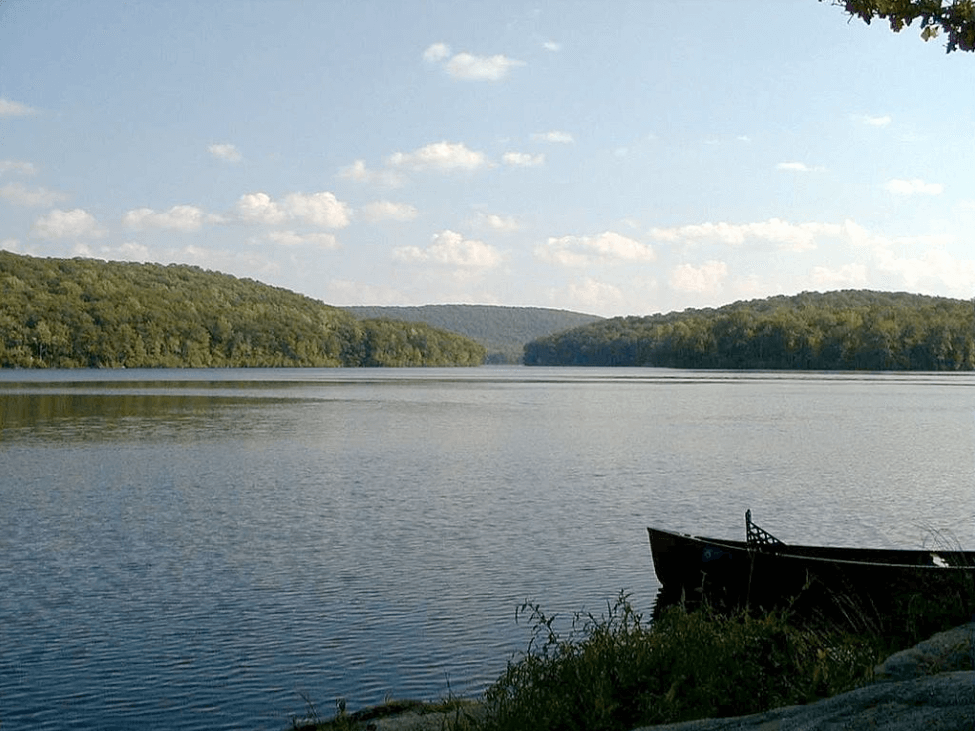
Johnsontown was founded in the late 18th century by the Johnson brothers, who came to the mountain looking for timber for shipbuilding.
This hamlet in the town of Stony Point, in Rockland County, was destroyed in the early to mid-19th century when the Palisades Interstate Park Commission decided to remove some communities.
Houses, churches, farms, schools, businesses, and many other dwellings were demolished and abandoned.
The abandoned places were later turned into lakes, forests, groves, meadows, and swimming areas.
You can still find ruins, broken roads, demolished houses, fallen buildings, a cemetery, and many building foundations.
It is one of the scariest ghost towns in New York, with many empty haunted houses.
People still visit this ghost house to scout for ruins pointing to the history of Johnsontown.
Address: Stony Point, Rockland County, New York
3. Jones Point
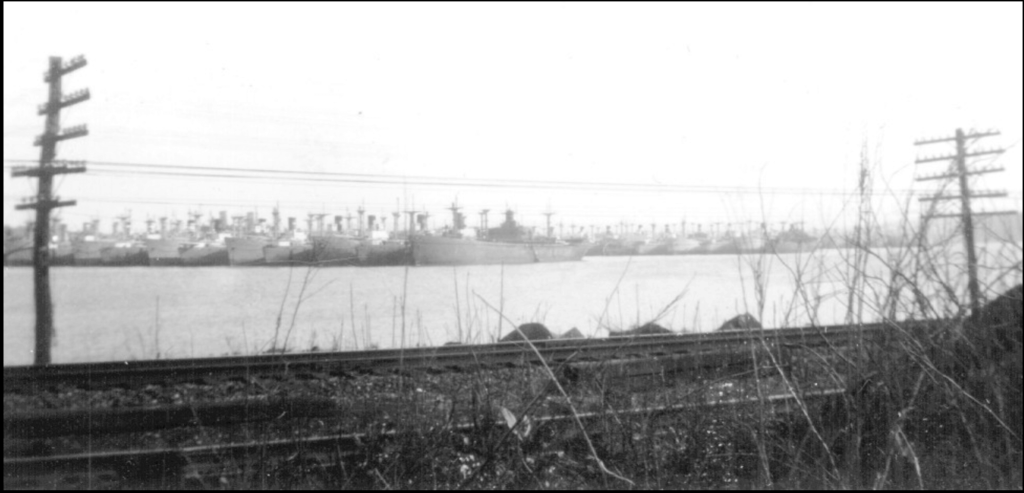
Ever heard the words “haunt” and “beauty” used together?
Jones Point, a former hamlet located in Stony Point in Rockland County, New York, is a hauntingly beautiful ghost town waiting to be explored.
Whether you’re an urban decay photographer or ruin gazer, you can’t resist exploring the ghost town of Jones Point.
But what makes this ghost town so fascinating is its murky past.
Jones Point was home to the Jones Point Chemical Weapon Research Laboratory during World War I.
The lab experimented with mustard gas, liquid fuels, and incendiary weapons.
It was closed in the 1920s, and the hamlet was abandoned, leaving behind a small cluster of decaying buildings and a sense of eerie stillness.
Exploring Jones Point can be scary if you can’t stand its eerie atmosphere.
Address: Stony Point, Rockland County, New York
Also see our article on Museums in New York.
Ghost Towns in Kingston, New York
1. Pottersville
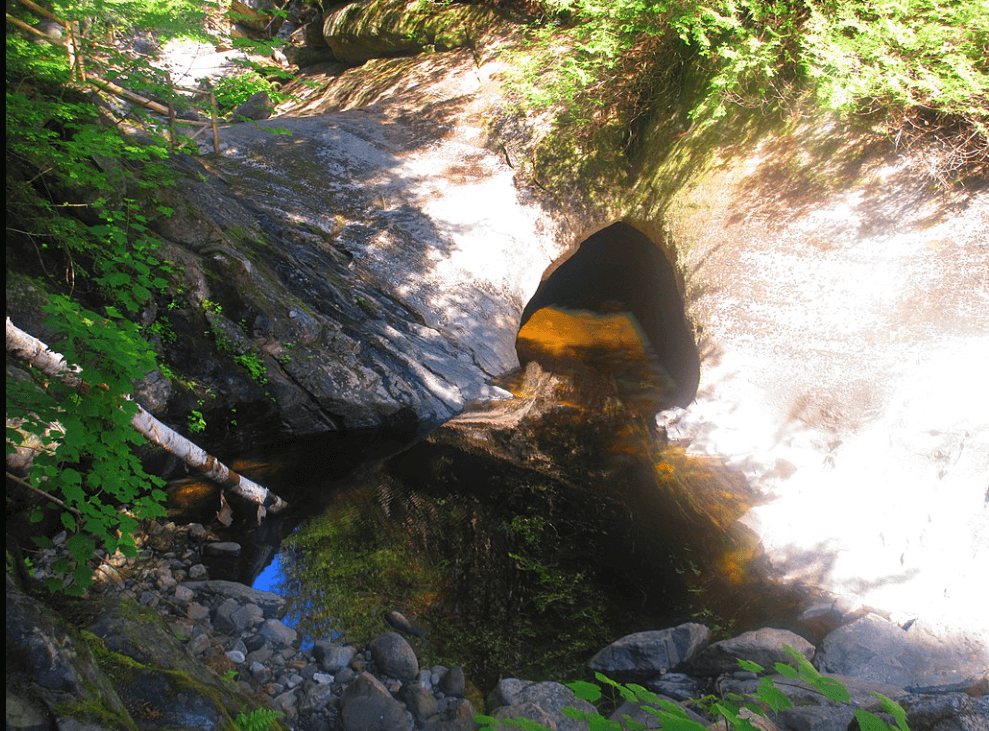
Pottersville, NY, may be an average small town, but it conceals a bone-chilling history.
Located off of Lundy Road near Kingston, this northeastern Warren County village was once devastated by a flood in 1927 that nearly destroyed it.
However, Pottersville’s troubles didn’t end there.
Local legends recount a gruesome murder in Pottersville in the mid-twentieth century.
A resident of Pottersville killed every member of his family before eventually taking his own life.
The aftermath of this tragic event has led to reports of floating objects and ghostly sightings believed to be the murdered family members.
Today, Pottersville stands abandoned, with only a few foundations of homes and garages left standing.
Despite this, visitors who have heard of its history tour this town seeking paranormal experiences and documentation.
Address: Chester, Warren County, New York
2. Trapps Mountain Hamlet
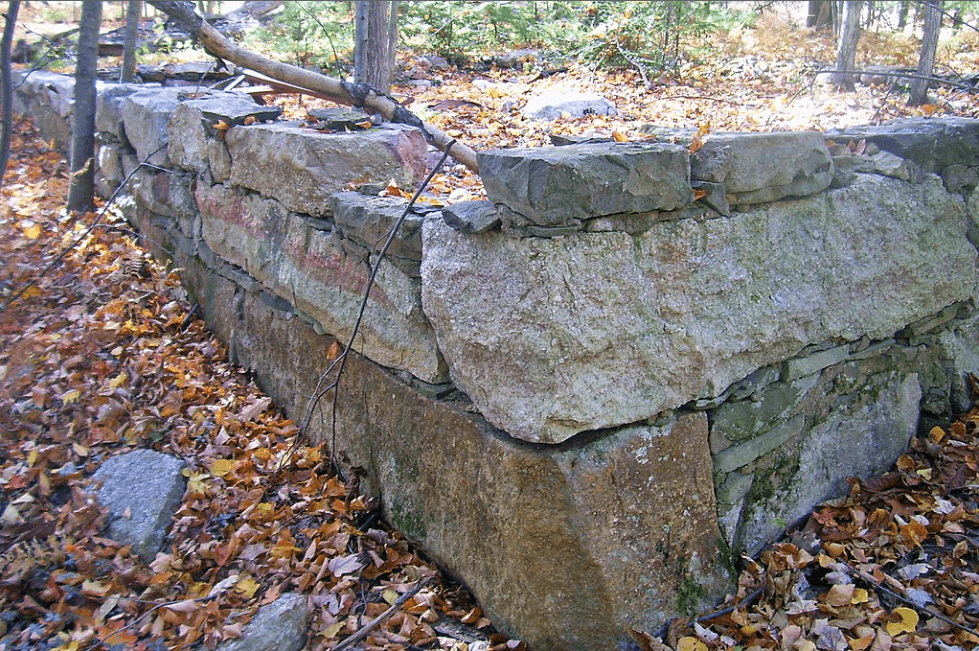
Are you a fan of abandoned places and spine-chilling tales?
Then Trapps Mountain Hamlet should make it to your list of must-visit places.
Trapps Mountain Hamlet is a historic district that has stood the test of time for centuries.
Founded in the late 18th century, the settlement thrived until the mid-20th century.
Today, only a few buildings are still standing, and most have left significant physical remains in the form of foundations.
Trapps Mountain Hamlet’s decline began in the early 1900s when technological advancements replaced traditional mountain industries.
The town could no longer afford its maintenance, and the main north-south route in the Trapps was abandoned in 1907.
Despite the decline, the community persisted until its abandonment in the mid-1950s, making it empty to date.
Address: Shawangunk Ridge in Gardiner, Kingston, New York
3. Brownville
Have you ever heard of Brownville, NY?
This forgotten town in Ulster County, New York, has been deserted for over 50 years and has zero residents.
But that doesn’t mean it lacks a fascinating history.
This little town in Ulster County, New York, has zero residents and has been left to the elements.
As an early county town, it’s named after founder Jacob Brown, a major general in the US Army and a hero of the 1812 War.
Despite its early success, Brownville slowly declined, and its residents moved away.
Today, the town is nothing but a ghostly reminder of its past.
It’s located roughly 3 miles south of Pottersville and was settled around 1799 near Brownville village.
People still visit this town to explore its ruins.
Address: Jefferson County, Kingston, New York
4. Shavertown
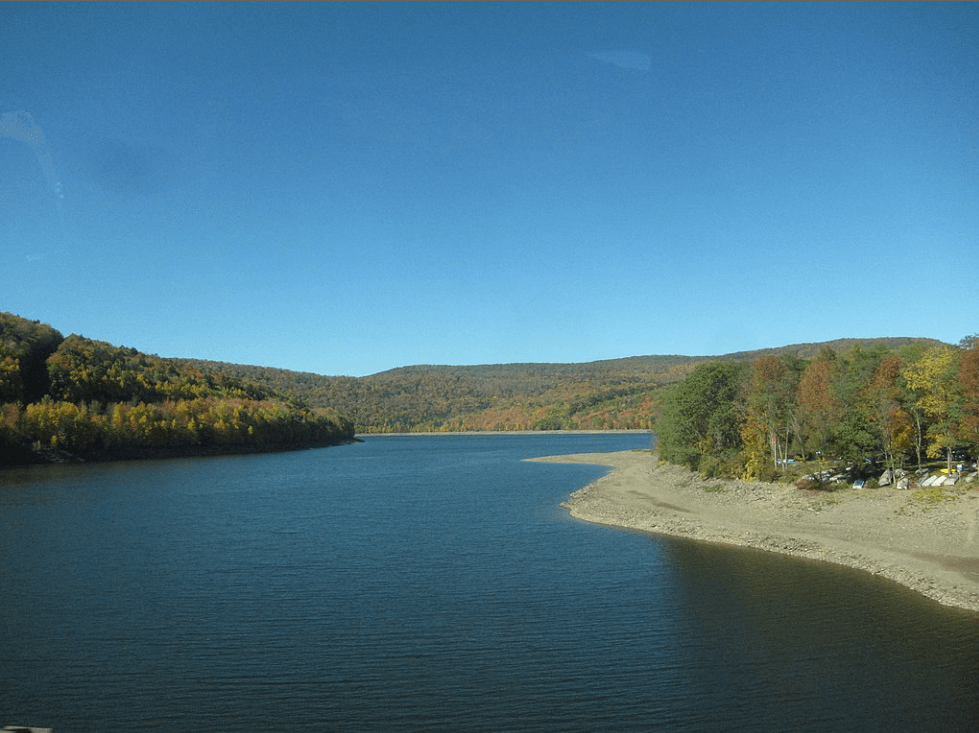
Welcome to the story of a hidden treasure in the center of Delaware County, New York.
Once a thriving hamlet, Shavertown is now buried under the Pepacton Reservoir.
This ghost town was given up to satisfy New York City’s water demands.
With a population of a few hundred, Shavertown relied heavily on the town’s timber industry.
The Delaware and Eastern Railroad ran through the town, connecting it to the outside world.
Yet, destiny determined that the town was destined to vanish.
The construction of the Pepacton Reservoir in 1954 caused Shavertown’s demise as the town was sacrificed to provide water to New York City, and the residents were forced to relocate.
Today, the reservoir’s tranquil waters cover the town’s remains, leaving only memories and a few eerie stories behind.
Address: Delaware County, Kingston, New York
Also see our article on Mountains in New York.
Ghost Towns in The Bronx, New York
1. North Brother Islands
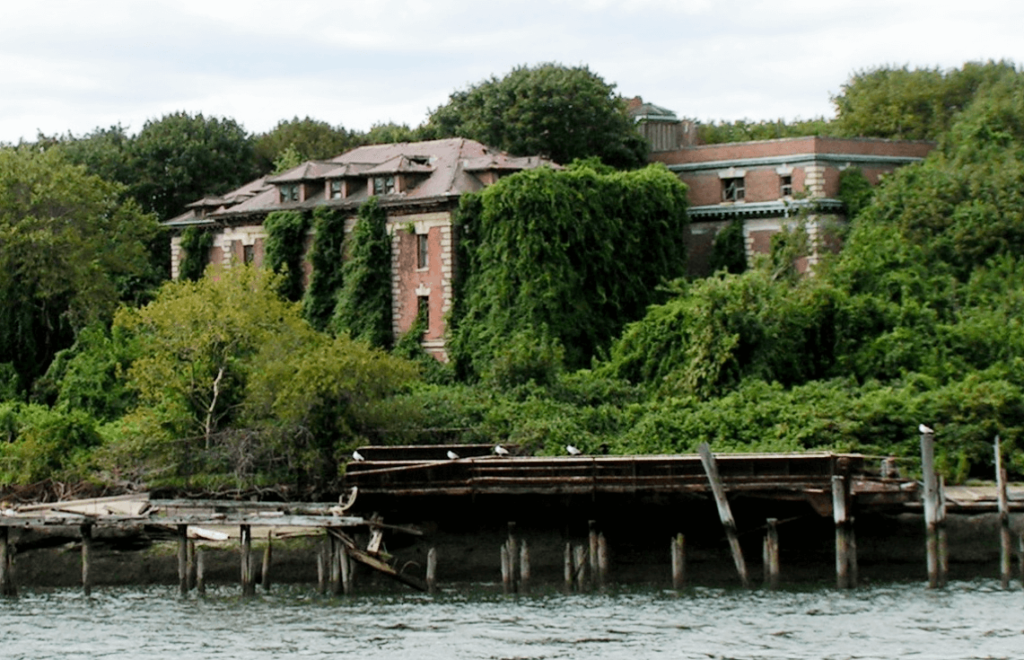
Can you imagine an arena for healing later, requiring the very thing it once gave?
North and South Brother Islands in the East River, between the Bronx and Rikers Island, hold historical significance.
At one time, North Brother Island was home to the Riverside Hospital, a quarantine facility for New York City’s most infectious patients.
In the 1880s, the island became a hospital site for smallpox, typhoid fever, and tuberculosis patients.
But North Brother Island’s history is not just one of healing.
A major maritime disaster occurred on the island in 1904.
General Slocum, a steamship carrying over 1,000 passengers on a church excursion, caught fire and sank near the island’s shores.
Many lives were lost, and today, North Brother Island is a bird sanctuary inaccessible to visitors.
Address: New York City’s East River between the mainland Bronx and Rikers Island.
2. Kensico
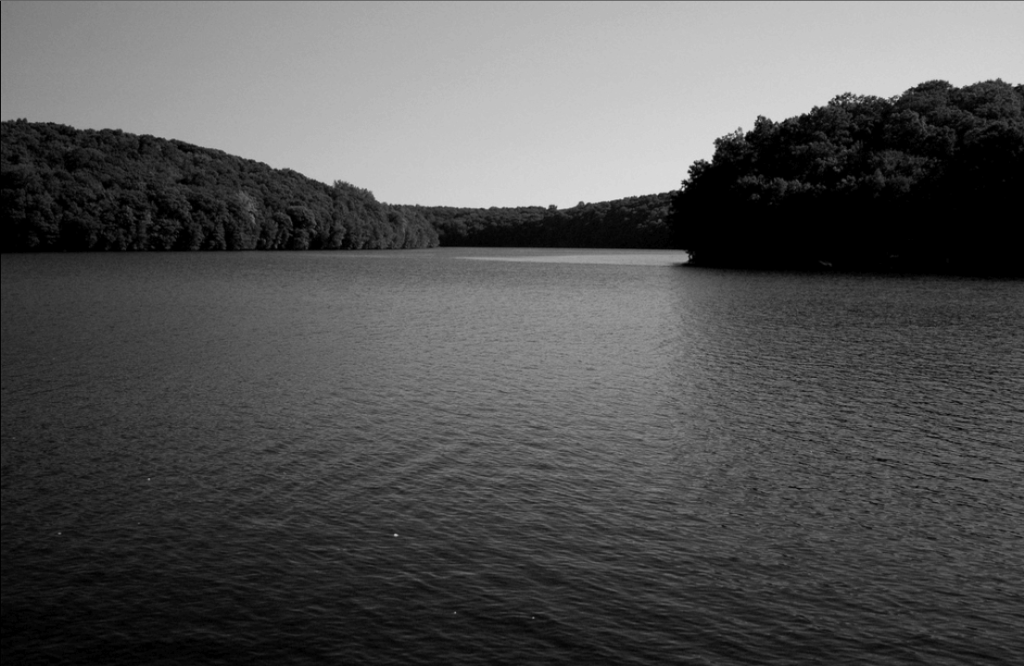
Once a thriving community, Kensico town was relocated and flooded to build the Kensico Reservoir, which is now one of the central storage reservoirs for the New York City Reservoir system.
Kensico Village was burned down and then flooded after the completion of the Kensico Dam in 1917.
The construction of Kensico Dam was no small feat. It took 1,500 workers, one million cubic feet of masonry (as much as the Egyptians used to build some of the pyramids), and four years to construct for $15 million (roughly $250 million in today’s currency).
Walking around the area now, you can still see the remnants of the town and the dam.
The eerie silence is a stark reminder of the bustling community that once existed here.
Address: Central Westchester County, New York
If you liked this article, you may also like to read about the best Hidden Gems, top Attractions, and best Places to Visit in New York.
Looking beyond New York? Check out our article on some popular Ghost Towns in Texas and Illinois.
